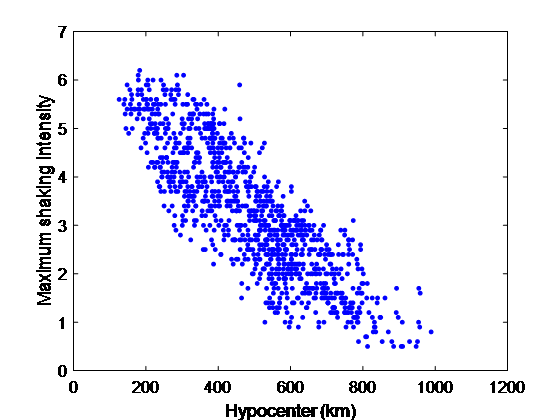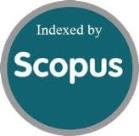Formulating Seismic Intensity Scale (JMA-SIS) Using Response Spectrum: A New Approach for Structural Engineering Design
DOI:
https://doi.org/10.46604/aiti.2024.14243Keywords:
Japan Meteorological Agency-seismic intensity scale (JMA-SIS), time history, response spectrum, rs_mSIS, Wariyatno coefficientAbstract
This study aims to formulate a calculation for earthquake shaking intensity (rs_mSIS) based on the response spectrum (RS) using the Japan Meteorological Agency-seismic intensity scale. The research investigates the relationship between the response spectrum parameters—period and maximum acceleration—and the earthquake source types, including megathrust, Benioff, and shallow crust/background sources. Artificial ground motions are generated and analyzed using Matlab to calculate shaking intensity values, which are then used to develop the rs_mSIS formula. The formulation is validated against actual response spectrum data from 15 Indonesian cities and demonstrated high accuracy, with the Wariyatno coefficient applicable across all models. This approach provides a standardized method to assess seismic intensity, offering enhanced reliability for building design in earthquake-prone areas and serving as a valuable tool for engineers and urban planners to improve earthquake resilience in diverse seismic environments.
References
J. Bustos, C. Pastén, D. Pavez, M. Acevedo, S. Ruiz, and R. Astroza, “Two-Dimensional Simulation of the Seismic Response of the Santiago Basin, Chile,” Soil Dynamics and Earthquake Engineering, vol. 164, article no. 107569, 2023.
V. Y. Sokolov, “Seismic Intensity and Fourier Acceleration Spectra: Revised Relationship,” Earthquake Spectra, vol. 18, no. 1, pp. 161-187, 2002.
National Research Institute for Earth Science and Disaster Resilience, “Strong-Motion Seismograph Networks,” https://www.kyoshin.bosai.go.jp/kyoshin/search/index_en.html, accessed on 2023.
S. Li, Y. Chen, and T. Yu, “Comparison of Macroseismic-Intensity Scales by Considering Empirical Observations of Structural Seismic Damage,” Earthquake Spectra, vol. 37, no. 1, pp. 449-485, 2021.
L. Serva, E. Vittori, V. Comerci, E. Esposito, L. Guerrieri, A. M. Michetti, et al., “Earthquake Hazard and the Environmental Seismic Intensity (ESI) Scale,” Pure and Applied Geophysics, vol. 173, no. 5, pp. 1479-1515, 2016.
V Sokolov, T Furumura, and F. Wenzel, “On the Use of JMA Intensity in Earthquake Early Warning Systems,” Bulletin of Earthquake Engineering, vol. 8, no. 4, pp. 767-786, 2010.
A. Sakai, “Generalization of Calculation Method for Seismic Intensity Using Filtered Acceleration,” The International Journal of Engineering and Science, vol. 7, no. 5, pp. 34-51, 2018.
“Tables Explaining the JMA Seismic Intensity Scale,” https://www.jma.go.jp/jma/en/Activities/inttable.html, accessed on 2023.
“Seismic Intensity,” https://www.jma.go.jp/jma/en/Activities/earthquake.html, accessed on 2023.
A. Sakai, “An Expression of the Seismic Intensity Level for a Long-Period Ground Motion,” Journal of Japan Society of Civil Engineers, vol. 3, no. 1, pp. 160-173, 2015.
N. G. Wariyatno, H. A. Lie, F. P. Hsiao, and B. S. Gan, “Design Philosophy for Buildings’ Comfort-Level Performance,” Advances in Technology Innovation, vol. 6, no. 3, pp. 157-168, 2021.
N. G. Wariyatno, A. L. Han, and B. S. Gan, “Proposed Design Philosophy for Seismic-Resistant Buildings,” Civil Engineering Dimension, vol. 21, no. 1, pp. 1-5, 2019.
V. Manfredi, A. Masi, A. G. Özcebe, R. Paolucci, and C. Smerzini, “Selection and Spectral Matching of Recorded Ground Motions for Seismic Fragility Analyses,” Bulletin of Earthquake Engineering, vol. 20, pp. 4961-4987, 2022.
N. Girmay, E. Miranda, and A. Poulos, “Orientation and Intensity of Maximum Response Spectral Ordinates During the December 20, 2022 Mw 6.4 Ferndale, California Earthquake,” Soil Dynamics and Earthquake Engineering, vol. 176, article no. 108323, 2024.
R.A. Medina, R. Sankaranarayanan, and K. M. Kingston, “Floor Response Spectra for Light Components Mounted on Regular Moment-Resisting Frame Structures,” Engineering Structures, vol. 28, no. 14, pp. 1927-1940, 2006.
P. Haldar, Y. Singh, D. H. Lang, and D. K. Paul, “Comparison of Seismic Risk Assessment Based on Macroseismic Intensity and Spectrum Approaches Using 'SeisVARA,” Soil Dynamics and Earthquake Engineering, vol. 48, pp. 267-281, 2013.
C. Kumar, S. Chatterjee, T. Oommen, and A. Guha, “New Effective Spectral Matching Measures for Hyperspectral Data Analysis,” International Journal of Remote Sensing, vol. 42, no. 11, pp. 4126-4156, 2021.
“Seismosoft,” https://seismosoft.com, accessed on 2023.
N. G. Damian, and R. Diaferia, “Assessing Adequacy of Spectrum-Matched Ground Motions for Response History Analysis,” Earthquake Engineering & Structural Dynamics, vol. 42, no. 9, pp. 1265-1280, 2013.
R. Zhang, L. Zhang, C. Pan, Q. Chen, and Y. Wang, “Generating High Spectral Consistent Endurance Time Excitations by a Modified Time-Domain Spectral Matching Method,” Soil Dynamics and Earthquake Engineering, vol. 145, article no. 106708, 2021.
M. Ishimoto, “Echelle d’intensite Seismique et Acceleration Maxima,” Bulletin of the Earthquake Research Institute, vol. X, no. 3, pp. 614-626, 1932.
E. Nouchi, N. G. Wariyatno, A. L. Han, and B. S. Gan, “Comfort-Based Criteria for Evaluating Seismic Strengthening Performance of Building,” IOP Conference Series: Earth and Environmental Science, vol. 1195, article no. 012002, 2023.
Guidelines for Earthquake-Resistant Design of Building and Non-Building Structures, Indonesian National Standard 1726, 2019.
E. Saputra and L. Makrup, “Deagregasi Hazard dan Rekomendasi Ground Motion Sintetik di Provinsi Riau,” Agregat, vol. 6, no. 1, pp. 505-510, 2021.
Indonesian Earthquake Hazard Deaggregation Maps for Earthquake-Resistant Infrastructure Design and Evaluation, Jakarta, Indonesia: Ministry of Public Works and Public Housing, 2022.
“Strong-Motion Seismograph Networks,” https://www.kyoshin.bosai.go.jp/, accessed on 2023.
“Strong-Motion Virtual Data Center (VDC),” https://www.strongmotioncenter.org/vdc/scripts/earthquakes.plx, accessed on 2023.
“PEER Ground Motion Database,” https://ngawest2.berkeley.edu/spectras/661775/searches/615283/edit, accessed on 2023.
“Center for Engineering Strong Motion Data,” https://www.strongmotioncenter.org/, accessed on 2023.

Published
How to Cite
Issue
Section
License
Copyright (c) 2025 Nanang Gunawan Wariyatno, Ay Lie Han, Yanuar Haryanto, Gathot Heri Sudibyo, Sumiyanto, Nastain, Arwan Apriyono, Laurencius Nugroho, Hsuan-Teh Hu, Fu-Pei Hsiao, Buntara Sthenly Gan

This work is licensed under a Creative Commons Attribution-NonCommercial 4.0 International License.
Submission of a manuscript implies: that the work described has not been published before that it is not under consideration for publication elsewhere; that if and when the manuscript is accepted for publication. Authors can retain copyright in their articles with no restrictions. is accepted for publication. Authors can retain copyright of their article with no restrictions.
Since Jan. 01, 2019, AITI will publish new articles with Creative Commons Attribution Non-Commercial License, under The Creative Commons Attribution Non-Commercial 4.0 International (CC BY-NC 4.0) License.
The Creative Commons Attribution Non-Commercial (CC-BY-NC) License permits use, distribution and reproduction in any medium, provided the original work is properly cited and is not used for commercial purposes.







